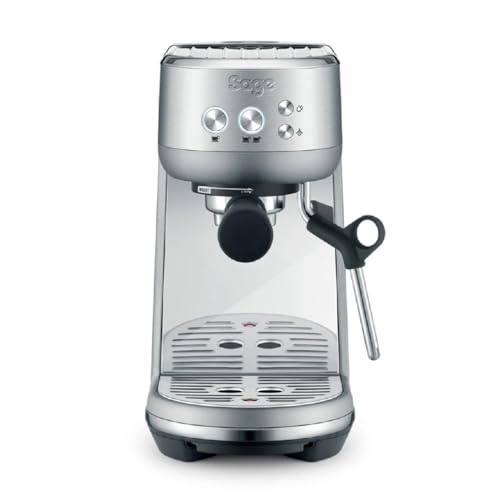How to Make Espresso Machine Coffee
Espresso machines can create an excellent cup of coffee, but they require more maintenance and setup than a standard coffee maker. It also requires that you grind and tamp your own beans.
The secret to making espresso is pressure. The way espresso machines work is that heating vessels heat the water to the perfect temperature, then it forces it out of the spouts and into the grounds.
Temperature
Espresso is created by forcing hot water, under pressure, through finely ground coffee beans. The temperature of the water is critical to the quality of the final shot. Low temperatures result in under extraction of essential flavor compounds. High temperatures can lead to excessive extraction, which could result in a bitter or burnt taste.
The ideal temperature range for espresso is 195-205degF. This temperature can be achieved using a grouphead that is designed to maintain the same temperature and stability throughout the brewing process. The most well-known type of group head is the E61 which offers the stability of temperature as well as pre-infusion capabilities and lever control.
It is essential to take into account the temperature when you adjust your espresso machine for different roasts or brew ratios. This can affect the extraction yield and the crema. The ideal temperature will vary on the specific roast and bean, but the general rule is that lighter roasts and higher ratios of brew require higher temperatures than darker roasts and lower brew ratios. A good thermocouple is crucial to keep the same temperature.
Pressure
When brewing espresso machine coffee is pushed through finely ground coffee grounds that have been stamped. This creates chemical reactions that extract flavors, oils and other soluble elements from the beans. The resultant beverage is usually more flavorful and richer than regular coffee.
The ideal espresso machine pressure is nine bar of pressure, which is the same as atmospheric pressure at sea level. The soluble compounds found in the espresso bean are best extracted at this pressure.
Some espresso machines boast up to 20 bar of pressure. They may be able to reach these pressure levels, but they may not maintain them throughout the extraction.
To put it into perspective In terms of pressure, one bar is equivalent to 32 pounds per square inch, or PSI, of a car tire. This is more than four times the pressure that a professional cyclist applies to their bike tires. Any serious home barista has to be able to regulate the pressure of their espresso machine, and also produce consistent espressos.
Water
Water is a key ingredient in a delicious cup of espresso. The right water allows your beans to extract their full potential. However the wrong kind of water can cause issues like clogging pipes, or damage to your expensive machine.
The best choice is a natural spring water that is rich in minerals for optimal espresso extraction. This water will enhance the taste of your espresso without the mineral chalky trace found in tap or bottled water. This is an excellent alternative to distilled water or reverse osmosis, which could be too filtered and cause taste issues.
It is not recommended to make use of a water filtration system that removes the mineral content of your tap water. This could cause taste and extraction issues. A good solution is to purchase a water test kit, which will reveal the water hardness in your area. This information can be used to find the correct filtration system to your espresso machine.
Beans
Most coffee lovers tend to be very involved throughout the process of making espresso. They obsess over a number of variables, including temperature, pressure of water beans, milk viscosity and other factors. If one of the variables is slighty off, the entire shot might taste bad.

The beans used are the most important aspect when it comes to espresso. Many believe that certain kinds are suitable for espresso. Although some beans are more suitable for specific uses however, any coffee bean that has been roasted can be used to make espresso. The main difference between espresso beans and regular coffee beans is that espresso beans are roasted for longer, tipycally past the second crack which gives them an appearance darker and makes them more soluble in water.
The best espresso beans are typically medium roasted or dark roasted. This gives the shots that distinctive richness and boldness. However, it is possible to make great espresso using light-roasted beans, particularly when the beans are ground prior to grinding (for convenience in an espresso machine).
Milk
Espresso and milk is a traditional combination. Not only does the coffee boost energy levels, but the steaming milk helps to balance the bitterness of espresso and provides a delicious creaminess. There aren' espresso coffee machines than this one!
When you are choosing an espresso machine capable of making latte or a cappuccino, you should consider how easy it is to use. A majority of the top espresso machines come with a jug of hot or cold milk as well as a steam wand. They also come with an espresso portafilter that can be used to make the shot. Some models have a built in grinder, tamper and frother.
To get rid of any condensed water the steam wand needs to be cleaned daily prior to use (or after each cup of espresso). The process takes around 30 seconds and is essential to ensure your machine is running smoothly. Failure to purge can result in bitter taste or a build-up of bacteria that may alter the taste and smell of your drinks. It's easy to do and should be part of your routine maintenance.
